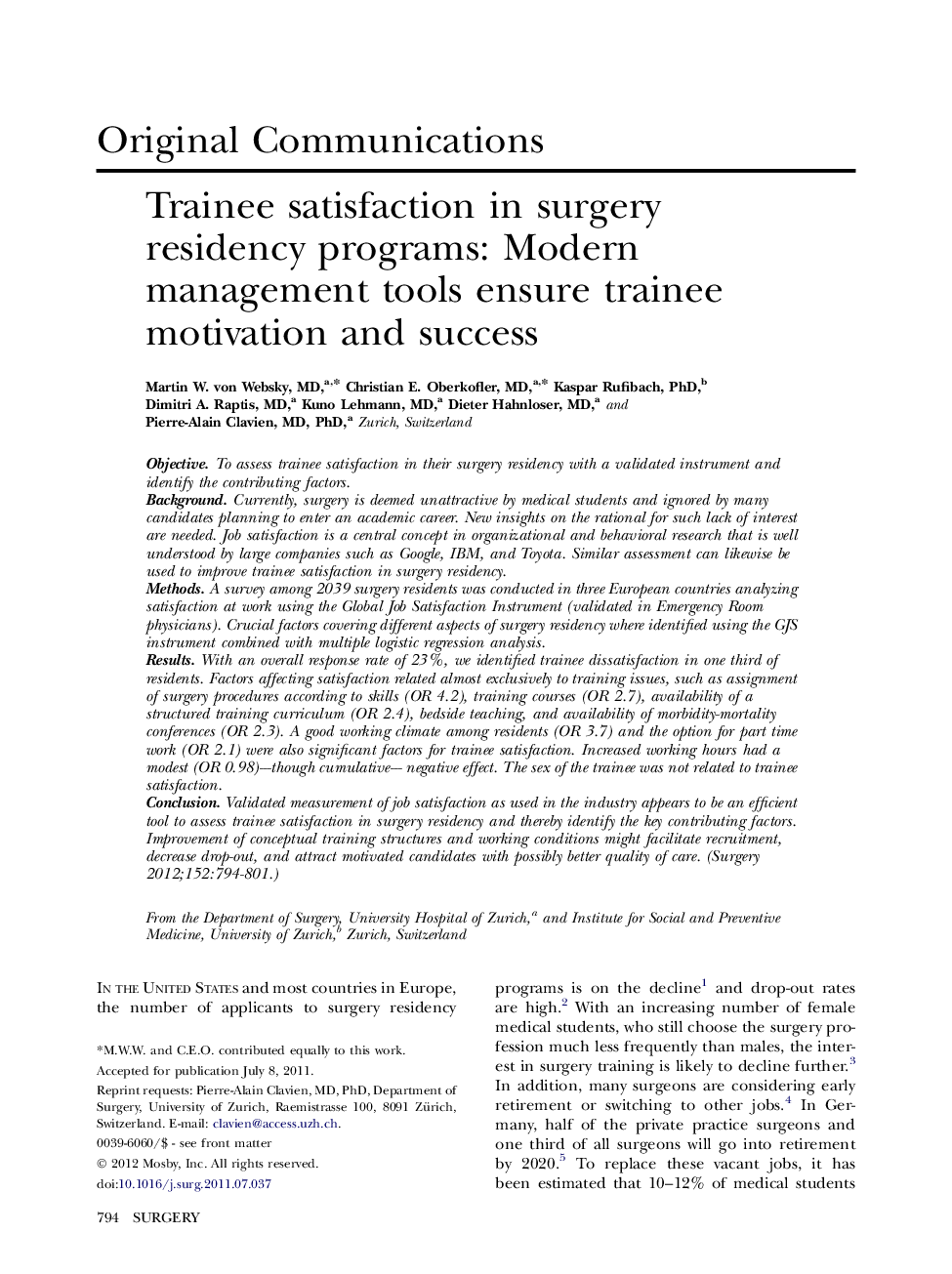| Article ID | Journal | Published Year | Pages | File Type |
|---|---|---|---|---|
| 4307238 | Surgery | 2012 | 8 Pages |
ObjectiveTo assess trainee satisfaction in their surgery residency with a validated instrument and identify the contributing factors.BackgroundCurrently, surgery is deemed unattractive by medical students and ignored by many candidates planning to enter an academic career. New insights on the rational for such lack of interest are needed. Job satisfaction is a central concept in organizational and behavioral research that is well understood by large companies such as Google, IBM, and Toyota. Similar assessment can likewise be used to improve trainee satisfaction in surgery residency.MethodsA survey among 2039 surgery residents was conducted in three European countries analyzing satisfaction at work using the Global Job Satisfaction Instrument (validated in Emergency Room physicians). Crucial factors covering different aspects of surgery residency where identified using the GJS instrument combined with multiple logistic regression analysis.ResultsWith an overall response rate of 23%, we identified trainee dissatisfaction in one third of residents. Factors affecting satisfaction related almost exclusively to training issues, such as assignment of surgery procedures according to skills (OR 4.2), training courses (OR 2.7), availability of a structured training curriculum (OR 2.4), bedside teaching, and availability of morbidity-mortality conferences (OR 2.3). A good working climate among residents (OR 3.7) and the option for part time work (OR 2.1) were also significant factors for trainee satisfaction. Increased working hours had a modest (OR 0.98)—though cumulative— negative effect. The sex of the trainee was not related to trainee satisfaction.ConclusionValidated measurement of job satisfaction as used in the industry appears to be an efficient tool to assess trainee satisfaction in surgery residency and thereby identify the key contributing factors. Improvement of conceptual training structures and working conditions might facilitate recruitment, decrease drop-out, and attract motivated candidates with possibly better quality of care.
